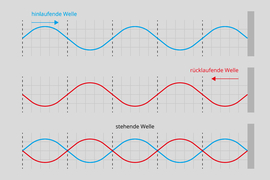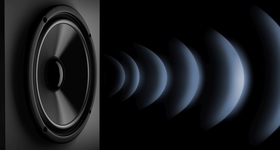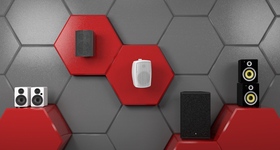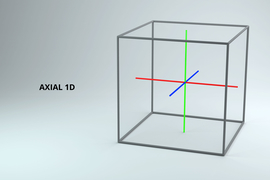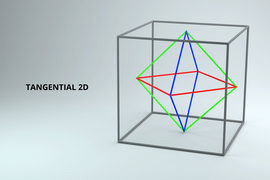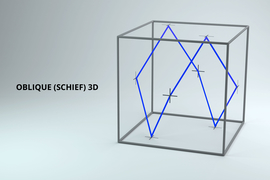
Room modes: this is how they affect the sound in a room
Absorbers can help you to counteract interfering frequency overlaps
Have you ever blown into an empty bottle until it produced a sound? Then you have unwittingly created a room mode or standing wave. The principle is simple: sound waves are reflected, interfere with each other and are greatly overemphasised or attenuated. This can be transferred to any enclosed space where speakers replay music. Some frequencies are stimulated to such an extent that room modes or room resonances occur. These can distort the sound and spoil the listening pleasure. Therefore, installers should pay attention to this - especially where good sound is important, such as in studios, home cinemas and other locations. In this article, you will learn what else you need to know about room modes and how absorbers dampen standing waves.
Room modes cannot be avoided and occur in every room
Let's go back to the initial example: you will have noticed that you can produce a sound by blowing into the bottle.
It is the same in closed rooms: speaker systems emit acoustic waves of a certain frequency that hit a boundary surface. These surfaces reflect the waves so that they are thrown back and reach their initial wave again. This leads to an overlap of sound waves especially in square rooms with parallel surfaces.
The sound wave bounces back and forth like a ping-pomg ball until it has been completely converted into energy. As a result, these frequencies reverberate for a particularly long time and can be perceived as too loud or too quiet. Therefore they are also called 'standing waves'.
Room modes occur mainly at low frequencies below 300 hertz
Especially bass frequencies can be affected. If those get cancelled, you can hardly hear the bass, or it even becomes inaudible, and if the bass frequencies are overemphasised, they become too loud or boomy. This phenomenon then spoils the listening pleasure. Your position in the room when hearing these frequencies is also relevant.
- At a wave node the sound pressure is minimal. Initial wave and reflected wave converge at a specific point. Experts call this minimum pressure. In the middle of a square room you would hear the bass frequency hardly at all because the frequencies (almost) cancel each other out.
- You might accidentally stand in an antinode where the sound pressure is at its maximum. That is the point where the initial wave and the reflected wave are farthest apart. In these places the sound pressure can be twice as loud. In our example, you would hear the bass frequency the loudest and would perceive it as unpleasant when you are standing across the room from the speaker.
How to calculate and predict standing waves
Let's look at our example with the bottle again: just as every container produces a different sound, every room reacts individually to very specific frequencies. This has to do with its dimensions. Room modes occur more frequently in square rooms. Here, there are exclusively parallel boundary surfaces in height and length as well as in width, between which sound waves can overlap.
Differently shaped rooms are less prone to room modes. Architects now take this into account in their planning. However, it is possible to determine in advance at which frequencies room modes occur. The following formula can be applied for each individual dimension:
f (frequency of the room mode) = speed of sound (343.2 m/s) ÷ 2 x distance between the walls
Example 1:
The room width (depth) is 3 metres. Thus, the frequency at which a room mode occurs between the front and rear walls in this specific room is 57.2 Hz.
Example 2:
The room is 2.20 metres high. The room mode between the floor and the ceiling occurs at a frequency of 78 Hz.
Example 3:
The length of the room is 4.25 metres. A room mode occurs between the left and right wall at 40.38 Hz.
WE ARE YOUR CONTACT PARTNER FOR AUDIO SOLUTIONS
Since rooms are not one-dimensional, room modes also move in different directions
In our examples for the calculation of standing waves, we have mainly looked at the axial modes that appear between two boundary surfaces of the same dimension. They are also called one-dimensional, although they can occur in all dimensions simultaneously. In addition, there are two other types:
- Tangential modes, or two-dimensional reflections, which arise between four boundary surfaces. They move within the room, for example from the left side wall to the ceiling and from there to the right side wall and towards the floor. Then they are reflected from the floor to the front wall, are thrown from the ceiling to the back wall and return to the floor.
- Oblique modes or three-dimensional reflections that occur between six boundary surfaces. They act diagonally in the room across its corners.
Further methods to localise room modes
A formula is not the only way to calculate room modes. There are now also Excel spreadsheets into which you can enter the room's dimensions, which will then give you an overview of where they occur in your scenario. Or you can use room mode calculators on the Internet.
There are also acoustic measuring systems, which usually consist of a measuring microphone and software. Of course, you can also rely on your hearing and adjust the alignment of your speaker system or your listening position accordingly.
Room modes do not only depend on a room's dimensions
You have already learned when standing waves appear and that they occur particularly frequently in square rooms. You also know how they can be localised and calculated. However, room modes also depend on other factors that you have to consider individually for each room:
- Materials in the room: not all surfaces of the room are made of the same materials. For example, a window may be embedded in a wall. There might be a carpet or laminate flooring. Waves can reflect differently from there and thus change.
- Objects and furniture in the room: if there are other objects in the room that the waves hit before they reach the boundary surface, such as furniture, those objects may interrupt the occurring room mode.
- The position of the speakers and the location of your listening position: if there is a pressure maximum where you are, you will perceive room modes more pronounced.
With sound absorption you improve the ambient sound
Do not worry, you are not helplessly at the mercy of room modes. For one thing, speakers are constantly being developed to improve their frequency response. For another, standing waves can already be approximately calculated in advance and thus localised. In addition, you can use absorbers to ensure that overemphasis or cancellations in the bass range are damped and the sound is not distorted. The most common are:
- Resonance absorbers or bass traps
- Membrane absorbers such as wall panels
Place the absorbers at reflection points
The absorbers are placed exactly where sound waves are reflected back and thus overlap. The absorbers counteract room modes because they attenuate or even eliminate reflections.
To do this, just hang wall panels in the appropriate places in the room. Bass traps are also available in square designs that fit perfectly in the corners of a room. The use of both types of absorbers at the same time has proven most effective. If you are equipped like this, nothing stands in the way of your perfect listening pleasure.
Would you like to learn more about influences on room acoustics such as the Haas effect or the frequency response of a speaker? Then feel free to browse through our magazine.
Headergraphik: AdobeStock bluedesign

